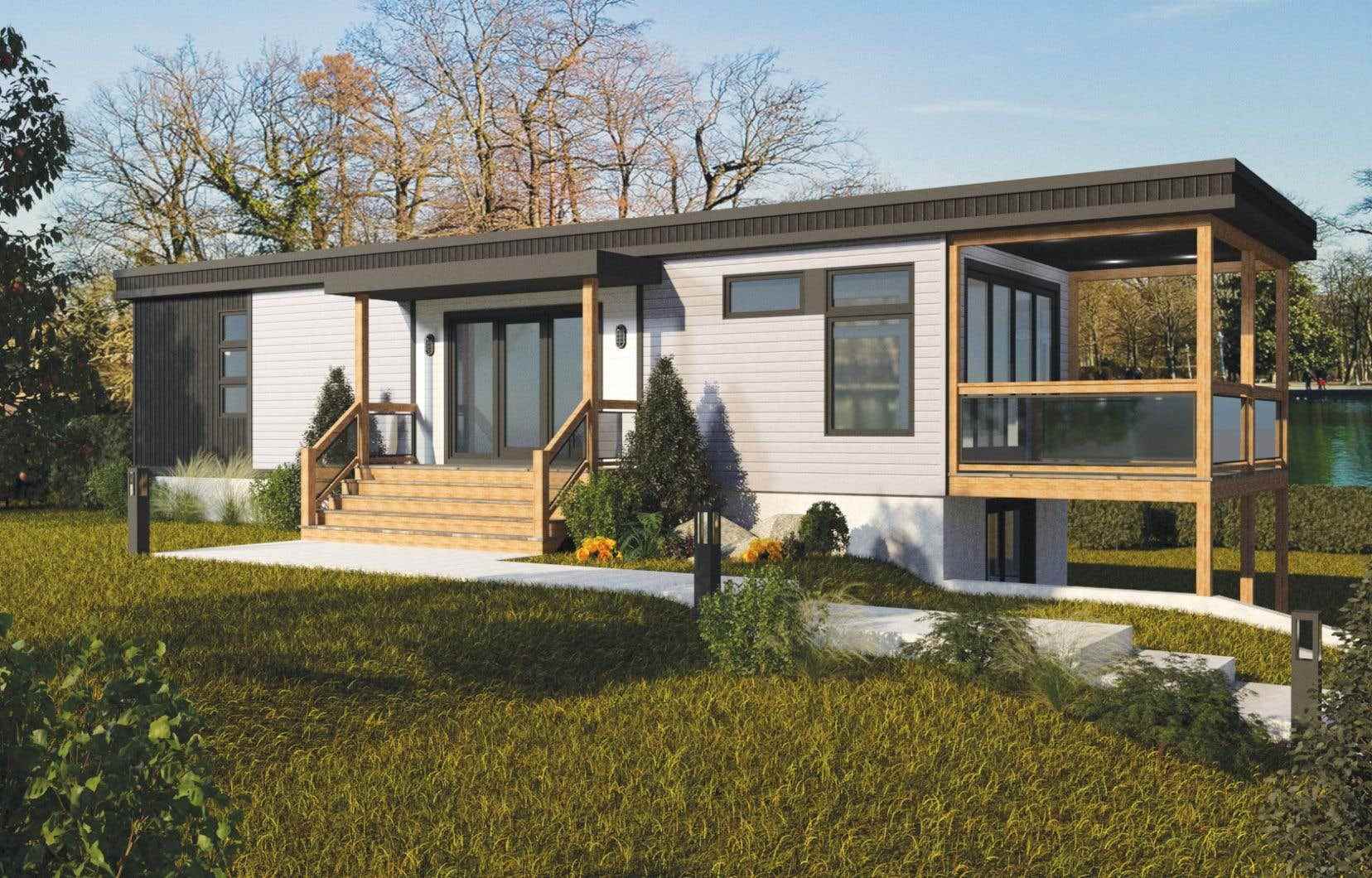The desire for a simpler life and affordable homeownership are driving more and more people to take an interest in tiny homes. But where does the phenomenon come from? And living in mini format, is it really a good deal for the climate?
“Most often, wanting to live in a tiny house is part of a minimalist project, a rejection of consumerism, a movement of voluntary simplicity,” explains Guillaume Lessard, former administrator and founder of the Mouvement québécois des minimaisons, now a postdoctoral researcher at the University of Waterloo and specialist in sustainable housing. Nevertheless, at the base, it is intended to be an affordable solution for access to property. It is moreover to preserve the “American dream” that the concept was born and gained momentum in the United States.
Where did this come from ?
The Tiny House movement, the tiny houses on wheels, comes from our neighbors to the South and exploded after the crisis of subprime in 2008. “People wanted to continue to have access to property without it costing too much,” says Guillaume Lessard. And that’s exactly what a tiny house on wheels did. These homes are inexpensive to build, especially on the west coast, where the climate does not require as much insulating material as in Quebec. Owners did not need to buy land and could move in with friends or on unzoned land illegally and temporarily.
Then the concept was picked up fairly quickly in Canada: Vancouver, Calgary, Edmonton. But it has also changed since dwellings on foundations, installed at the back of the courtyard, are slowly but surely replacing houses on wheels. In other words, the new trend is to build tiny houses on land that already houses a main dwelling.
reserved quarters
The other major trend in Quebec is neighborhoods reserved for tiny houses. For example, the City of Sainte-Marguerite-du-Lac-Masson has launched a 200-lot project, modifying some of its regulations along the way. 75 houses have already been built at the Nature sur le lac domain.
If, in Quebec, tiny houses are not accepted everywhere, more and more municipalities authorize their construction, in one form or another. “Changing regulations takes time,” recalls Guillaume Lessard. To find out where to find this type of dwelling, you can consult the Mouvement québécois des minimaisons website, which offers an interactive map.
A matter of size
Several definitions coexist when it comes to tiny houses. “During the first symposium on tiny houses which took place in Sherbrooke in 2017, we tried to propose a precise vocabulary: “tiny houses” for houses on wheels of approximately 300 square feet, “mini houses” for those of approximately 300 to 600 square feet, built on stilts, blocks, piles or foundations, and “small houses” for dwellings of 600 to 1,000 square feet,” explains Guillaume Lessard. But according to the specialist in urban studies, no one agrees precisely on this vocabulary.
But is it really more ecological to live in a tiny house?
According to Guillaume Lessard, tiny houses are presented as a romantic solution to the ecological question by playing the card of simplicity. “It’s as if we were offering a unique solution, namely a cute little house, to a lot of societal problems: climate change, a more sustainable way of life, access to property, analyzes the specialist. The tiny house is attractive because it gives the impression that it solves several problems. »
But it is in the details that we truly measure the ecological impact. For example, the environmental footprint of a tiny house on the land of an existing house in urban areas is much smaller than that of a tiny house built on an agricultural or natural area.
Also, a small home uses less energy than a larger one, but is it more economical than an apartment, which shares walls, ceiling and floor with other units? “Not necessarily, admits Guillaume Lessard. Still, it’s an isolated single-family house. »
Opting for a tiny house will therefore not necessarily reduce our impact on the climate; it all depends on our situation and our way of life. To meditate !
A first version of this article was published on Onepointfive.ca November 25, 2020.
